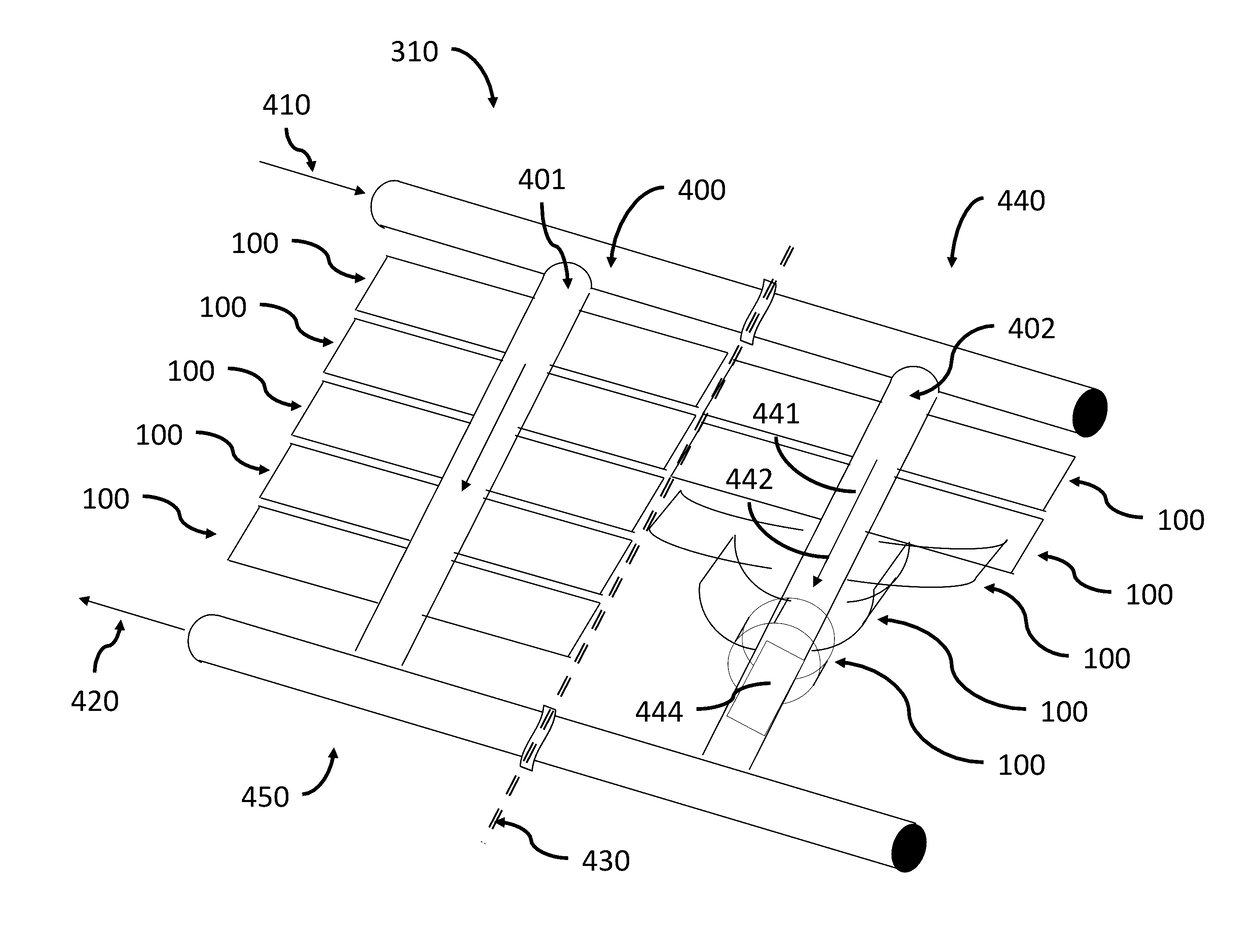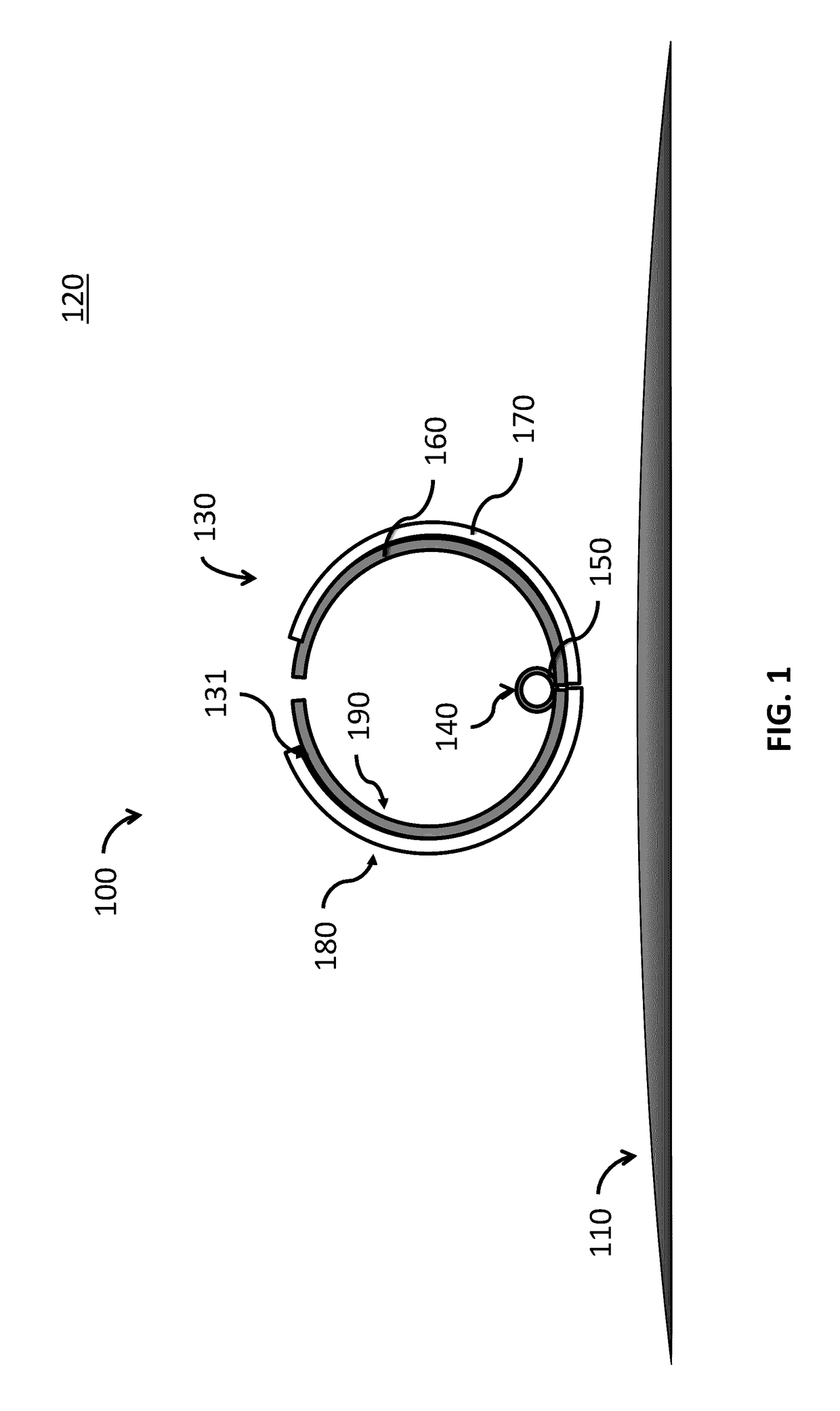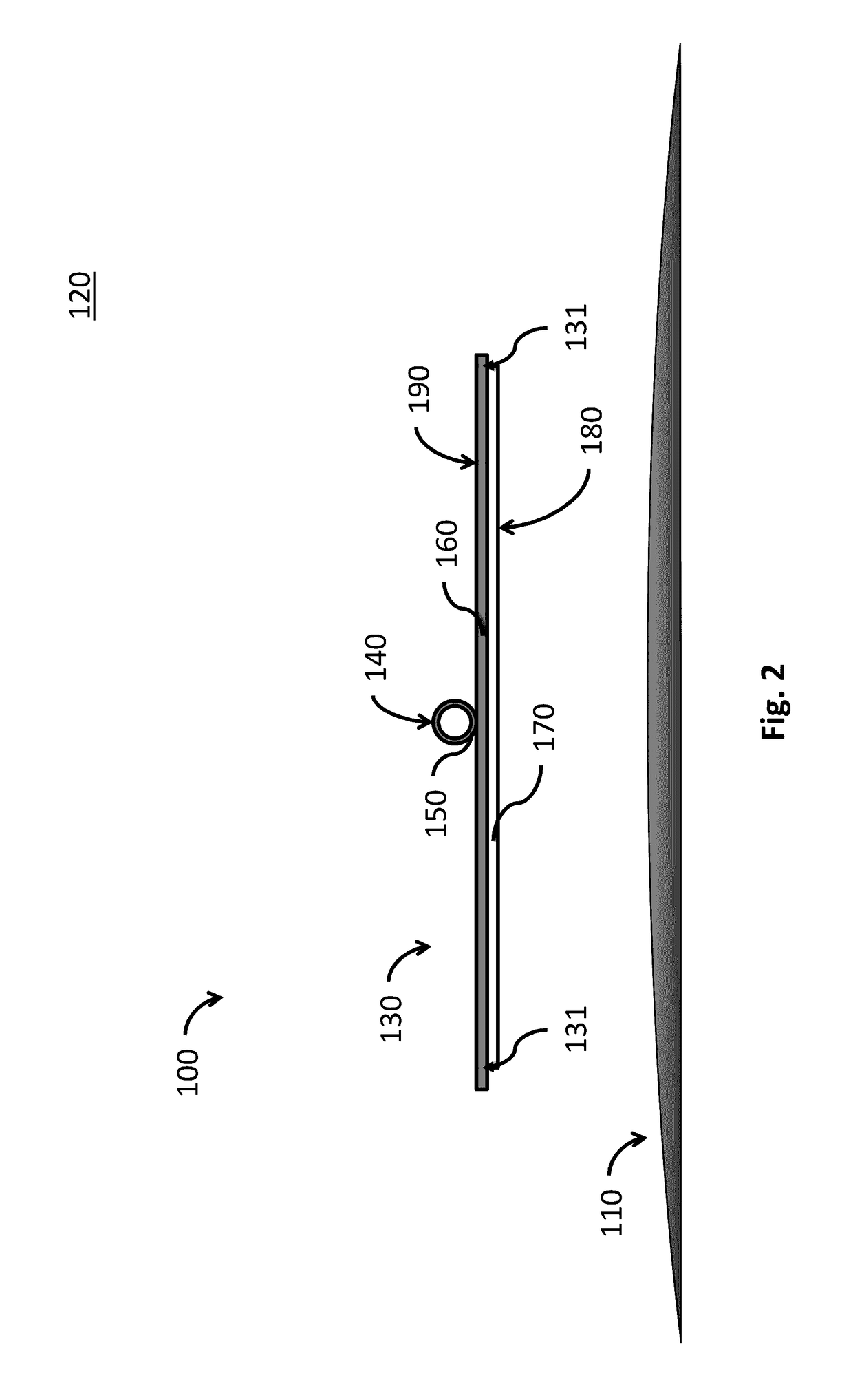Variable Heat Rejection Device
a heat rejection device and variable technology, applied in indirect heat exchangers, lighting and heating apparatuses, laminated elements, etc., can solve the problems of increasing cost, complexity and mass, difficult thermal control challenges, and limited heat rejection range of radiator systems used for this thermal control. , to achieve the effect of limiting heat rejection, low heat rejection shape and high heat rejection shap
- Summary
- Abstract
- Description
- Claims
- Application Information
AI Technical Summary
Benefits of technology
Problems solved by technology
Method used
Image
Examples
Embodiment Construction
[0023]FIG. 1 and FIG. 2 show a diagrammatic cross sectional view illustrating a cold or low heat rejection state and a warm or high heat rejection state, respectively, of thermal energy radiator system 100 at least one of which comprises a key and enabling element of a heat rejection system 300 (see FIG. 3) according to a preferred embodiment of the present invention. A spacecraft, satellite or other extraterrestrial vehicle 110 (shown in part only and to rough scale) preferably includes an environment 310 for crew 320, heat generating hardware and systems 330, or both, and at least one thermal energy radiator system 100. Heat is preferably collected from heat sources within the vehicle 110 and transported to a heat rejection system 300 by means of a thermal control system 310.
[0024]Extraterrestrial environment 120 comprises a range of temperatures and other conditions that are uninhabitable by humans and inhospitable to electronics, avionics and hardware, and thus requires the use ...
PUM
| Property | Measurement | Unit |
|---|---|---|
| heat rejection capacity | aaaaa | aaaaa |
| thermal energy | aaaaa | aaaaa |
| temperature | aaaaa | aaaaa |
Abstract
Description
Claims
Application Information
 Login to View More
Login to View More - R&D
- Intellectual Property
- Life Sciences
- Materials
- Tech Scout
- Unparalleled Data Quality
- Higher Quality Content
- 60% Fewer Hallucinations
Browse by: Latest US Patents, China's latest patents, Technical Efficacy Thesaurus, Application Domain, Technology Topic, Popular Technical Reports.
© 2025 PatSnap. All rights reserved.Legal|Privacy policy|Modern Slavery Act Transparency Statement|Sitemap|About US| Contact US: help@patsnap.com



